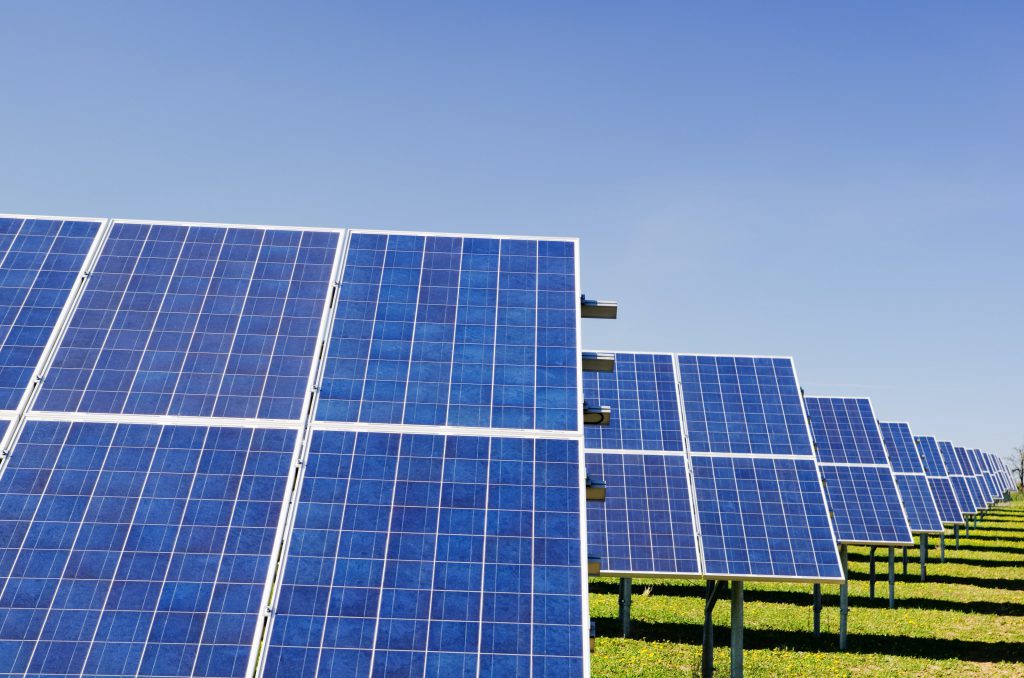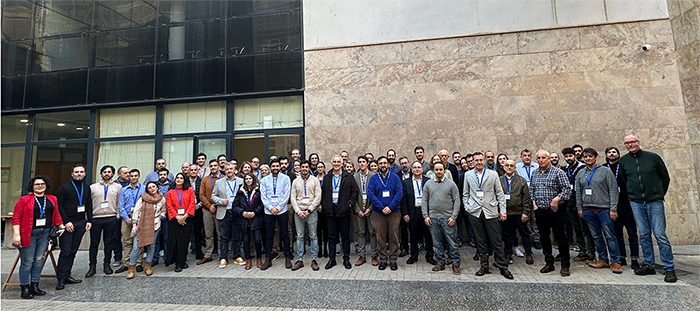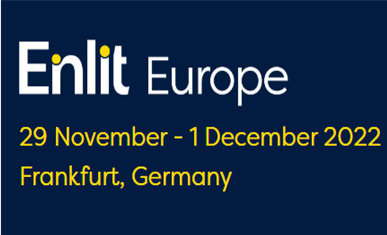11 September 2024
Article
Article: Smartened grids serving the active nodes of energy communities for optimal multi dispatch energy systems

Smartened grids serving the active nodes of energy communities for optimal multi dispatch energy systems
Today we need more than ever, the real evolution of smart grids. We need the transformation of the electricity networks enabled to use digital technologies, with sensors and softwares to better match the supply and demand of electricity in real time while minimizing costs and maintaining the stability and reliability of the grid. Automated systems and self-healing logic that prevails in the daily operations of systems, are the characteristics that we need to be functional, to offer the operational versatility to achieve the optimal use of the distributed resources
that are emerging. In the highly interconnected world that we live in, smart grids are becoming an operational necessity in implementing the technologies that will lead us to clean energy transition, with further electrification of the economy leading to large increase in electricity use and the widespread rollout of variable renewables like wind and solar, placing greater demand on power grids. Flexibility on the demand side, using storage of various forms including vehicle to grid technologies and other demand variability, need the logic and capabilities of smart grid technologies that can manage this transition while reducing the need for costly new grid infrastructure. Following this route, the emerging responsive system, can also help to make grids more resilient and reliable, always staying within the operational capabilities of the employed infrastructure.
Energy transition requires the real use of natural resources resulting in electricity generation shifting from a few large central power plants to many smaller units connected mainly at the distribution level. Complementing the paradigm shift to smaller units as the main source of energy where it is consumed, we will see the emergence of large central power generators, RES based, using technologies such as PV utility size systems, large onshore/offshore wind-power plants, hydro-electric power plants, marine energy parks etc. This evolution of
resources will generate the following challenges:
- More generation at LV and MV level increasing the risk of local voltage problems and congestions.
- Resources that can help to address voltage and balancing problems will move, to a large extent, from central transmission system level (HV) to distribution system level (MV/LV).
- A central system operator at transmission level no longer has the system overview to effectively dispatch reserves, so coordination between operators at different voltage levels will be essential.
- The distribution and availability of resources (production as well as storage) may vary significantly from geographical location to location.
- Operation and protection principles result in solutions that use combination of technologies including power electronics, battery systems etc that equally respond as required to offer robust and resilient systems.
The way we construct and operate the integrated grid is undergoing transformation.
This described paradigm change of load following generation instead of the traditional way till today of generation following load, is transforming the way we construct and operate the integrated grid. Centrally managed systems give way to active local systems that can be of various sizes depending on local management ownership and operational needs. Each such collective entity once specified can be considered as an electrical cell, that links all the active elements that it contains, enabling it to act as a collective electrical unit. This was first introduced by the project ELECTRA [1] defining the emerging system as the WEB OF CELLS (WoC).
As the geographically bound electrical systems are evolving to be highly attractive for the development and operation of Energy Communities, it is important to analyse their structure and how they can act as distinct entities in the energy mix with all rights to develop and operate for the benefit of their members. Hence, understanding the important attributes of the electrical cells and how the web of cells evolves will give the required evidence that such systems are well suited to serve their members meeting all financial and technical requirements. The WoC is a cell-based architecture for decentralised balancing (frequency) and voltage control arguably suited to serve energy communities and offer its members independent means for development and optimal operation. The future power system can be envisioned as split into a WoC structure, where each cell is defined according to the following rules (Fig. 1):

- A group of interconnected loads, generation plants, and/or distributed energy resources and storage units within well-defined grid boundaries corresponding to a physical portion of the grid and corresponding to a confined geographical area.
- A cell is by design not a microgrid which is defined as being able to operate in grid-connected as well as in ‘islanding’ mode [3].
- A cell is in ‘balance’ when it is able to follow the scheduled consumption/generation that was agreed between the balancing responsible parties (BRP).
- Cells have adequate monitoring infrastructure, as well as local reserves capacity enabling them to resolve voltage and cell balancing problems locally.
- Cells are connected to neighbouring cells via inter-cell physical tie-lines where multiple connections between cells are possible. Using the above WoC definition, the following specific characteristics can be observed:
- Local problems are usually solved within a cell where local observables are used to decide on local corrective actions to handle local issues (i.e. localisation and local empowerment);
- Communication complexity and latencies as well as computational complexity are minimised (i.e. divide and conquer);
- Local grid conditions are explicitly taken into consideration when deciding what kind of resources are used;
- Provision of a distributed bottom-up approach for the restoring of the system balance;
- Focus more on balance restoration and thereby restoring frequency as well – rather than the current traditional sequence of frequency containment followed by frequency restoration.
Energy communities can be vital energy systems
Energy communities fall within the above network architecture and have all the essential authorizations through local legislation and regulation codes that allow the above needed freedom to develop and operate. Most importantly, the above architecture offers the possibility of operating the community as a smart node with collective trading of flexibilities or otherwise, with the wider grid and neighbouring cells for optimal benefits to its members. The evolution of distributed energies and how WoC can offer vital benefits for systems optimization in the era leading to zero emissions, is exemplified by the findings of the National Grid Electricity System Operator (ESO) of Great Britain [4]. Central dispatch as currently practiced, is not the desired model for effective management of distributed generation and other active resources, generating a plethora of problems in managing energy transition issues.

One example of the problems experienced through central dispatch is depicted in Fig. 2 revealing the inaccurate signals for demand flexibility to respond. For this reason, the nodal approach was developed independently through an extensive study by the UK ESO [4] ending up in utilizing principles that are highly aligned with the WoC architecture. This notable study reached the following conclusions:
- The analysis showed that the status quo will not deliver net zero cost effectively, as current market design creates inefficient behaviours, particularly in dispatch, resulting in dramatic and rising costs for consumers.
- The most efficient solution to this is real-time dynamic locational signals, and the study assessment of the three locational market design options finds that neither national nor zonal pricing can deliver these effectively.
- The analysis showed that a nodal pricing market with central dispatch has the potential to deliver significant consumer benefits through facilitating efficient dispatch of generation, demand and flexible assets and optimising siting decisions across the whole electricity system.
- It creates the opportunity for consumers and industry to access lowcost, low-carbon electricity when and where it is abundant.
Following this identified route, there is the undisputed evidence that energy communities can be vital energy systems that can act optimally to the energy balance of countries acting as smart nodes. This is in line with the above findings of the UK ESO study and the conclusions reached through the WoC architecture developed and presented by the project ELECTRA. The International Energy Agency (IEA) has recently stressed the potential of local energy communities as “a central pillar of the clean energy transition” [7], and acknowledged their “clear benefits” in “deploying renewables and efficiency, reducing bills, supporting access and reliable power supply”. EU researchers have highlighted their promotion as a “solution to accelerate the transition towards a more decentralised, decarbonised and just energy system” [8] and several policies are trying to strengthen their role as “vital actors in the energy system”. A comprehensive ‘’toolbox’’ is under development facilitating optimal development, operation, and control of energy communities, is addressed by many R&I projects giving valuable outcomes that can equip energy communities with the required infrastructure to develop and operate efficiently for its members and the system as a whole. To foster the uptake of energy communities and help them get developed, a comprehensive “toolbox” is under development through the eNeuron [5] project offering a whole set of advanced technological tools aiming at meeting the energy needs of the users while maximising the use of renewables, and minimising costs and environmental footprint. While existing methodologies had until now one single economic objective, this toolbox which is in an advanced stage of development, derives from a holistic approach and pursues the goal of optimising processes and outcomes at different levels and considering also environmental criteria. It’s all about creating the conditions to allow different shareholders to get together, set up or co-exist in an energy community, and then adjust its operation, according to their priorities: to cut the costs, reducing the carbon footprint or maximising the comfort of the end users. The focus is especially on “local integrated energy systems”, and using multiple energy vectors, energy communities can optimize their contribution and identify rewarding synergies. For this reason, the toolbox of eNeuron aims to answer three main questions: how to design them; how to make them work and optimise their outcome; and how to align their goals with those of each single user. The overall functional architecture of the eNeuron toolbox consists of three phases necessary for optimal planning and operation of an Integrated Local Energy Community (ILEC):
- The Planning phase includes optimal configuration of the integrated energy system for the ILEC.
- The Operational analysis phase, which optimises day-ahead the operation of the multi-carrier system, which was defined in the first step.
- The Real-time operational phase which optimises the system close to real-time. This step is the most demanding regarding data communication, security and computation burden, including fast control of the local devices such as load, local generation, and storage
Bibliography
1. “Deliverable D4.2, Description of the detailed Functional Architecture of the Frequency and Voltage control solution (functional and
information layer)”, Luciano Martini et al, www.electrairp.eu
2. “Grid of the future and the need for a decentralised control architecture: the web-of-cells concept”, Luciano Martini, Helfried Brunner, Emilio Rodriguez, Chris Caerts, Thomas I. Strasser, Graeme M. Burt, IET Journal ISSN 2515-0855 doi: 10.1049/oap-cired.2017.0484
3. Navigant Research: ‘Utility spending on asset management and grid monitoring technology will reach nearly $50 billion through 2030’,
2014
4. Markets Roadmap, Cian McLeavey-Reville, Market Development Senior Manager, National Grid ESO, https://www.nationalgrideso.
com/research-and-publications/markets-roadmap
5. “Optimising the design and operation of local energy communities based on multi-carrier energy systems”, https://eneuron.eu/
6. “An Innovative Toolbox for the Optimal Design and Operation of Integrated Local Energy Communities” Marialaura Di Somma, Christina
Papadimitriou, Andrei Morch, Hanne Sæle, Peter Richardson, Alessio Coccia ,Amedeo Buonanno, Power Energy and Industry Applications, October 18, 2023.
7. https://www.iea.org/events/the-role-of-local-energy-communities-in-clean-energy-transitions
8. https://ec.europa.eu/commission/presscorner/detail/en/qanda_20_1258




